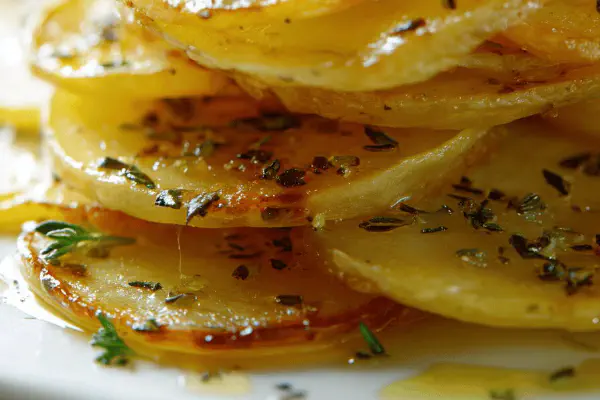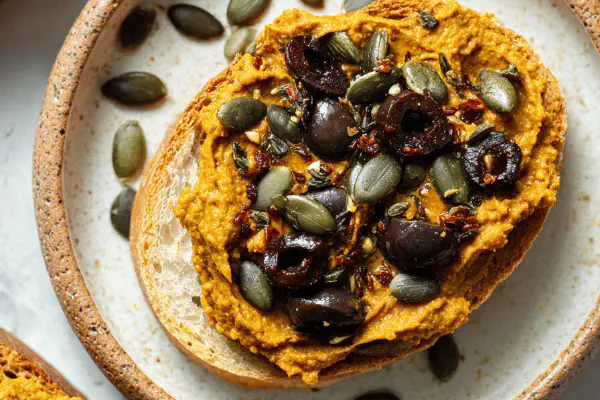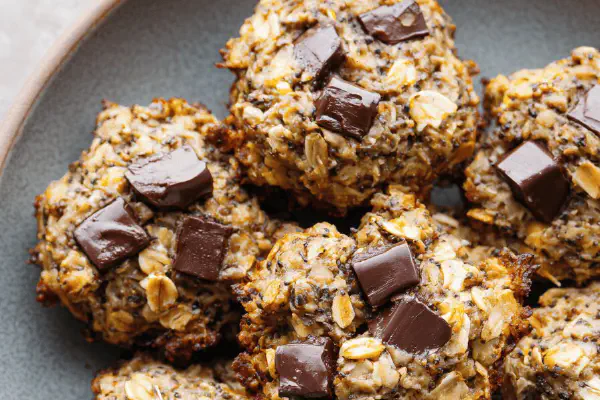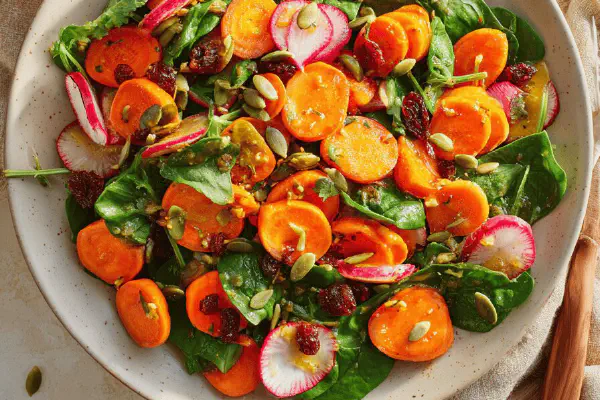Tangy Pickled Carrots
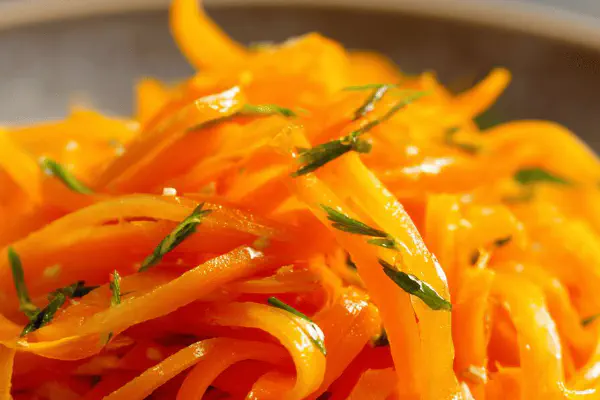
By Emma
Certified Culinary Professional
Ingredients
- 100 ml (⅓ cup plus 1 tbsp) carrot, thin julienne (about 1 medium carrot)
- 20 ml (1 ½ tbsp) apple cider vinegar
- 10 ml (2 tsp) maple syrup
- ½ tsp lime zest
- 2 ml (½ tsp) sea salt
About the ingredients
Method
- Peel carrot, cut into fine sticks. Keep uniform for even flavor pickup.
- Combine vinegar, maple syrup, lime zest, and salt in a small bowl. Stir to dissolve sugar and salt.
- Add carrot strips to dressing, toss thoroughly. Ensure all carrot coated.
- Cover loosely, leave to sit 10-20 minutes to develop tang and soften.
- Drain liquid before serving. Optionally squeeze lime wedge for extra brightness.
- Serve chilled or room temperature. Use as condiment or salad element.
Cooking tips
Chef's notes
- 💡 Cut carrot thin julienne. Uniform strips help even acid soak. Too thick slows flavor. Too thin dissolves crunch. Crisp carrot needed. Old or soft carrots turn mushy fast. Keep pieces similar size. Quick macerate means timing key; 10 mins minimum softens edges but keep core bite. More time, softer carrots but risk limpness. Drain well. Dressing coats, not soaks carrots. Excess liquid dilutes flavor, soggy texture. Salt draws moisture out; measure carefully to balance tang and side flavor. Maple syrup adds more than sweetness; caramel notes deepen pickling taste without overpowering acidity.
- 💡 Use apple cider vinegar over sharper vinegars. Fruitier acid softens carrot edge without harsh bite. Lime zest releases oils; add before soaking. Zest, not juice, avoids watery mix but packs aroma. Optional lime juice last step if needed for brightness but too much dilutes crispness. Cover loosely, avoid airtight seal; allows slight air but prevents contamination. Too much air means quicker spoil. Keep small batch for freshness; stale pickles get soft and flavor drifts. Early draining stops excess soaking, keeps snack crisp. Dressing ratio matters; adjust if carrots volume changes. Sweetener alternatives like agave or honey work but shift flavor profiles.
- 💡 Maceration time controls final texture. Shorter soak means crunchier carrots, less tang. Longer pickling softens carrots, stronger acidity. Adjust by preference but beware sogginess. Drain liquid well to avoid watery serving. Use sharp knife or mandoline for uniform cutting—faster flavor absorption. Adding radish slices adds peppery hit, contrasts carrot sweetness. Salt amount finely tuned; too little weakens flavor punch, too much toughens carrots. Store in airtight containers up to 48 hours. Avoid over-macerating leftovers; texture degrades fast. Serve cold or room temp. Room temp flavors open but carrots become softer faster.
- 💡 Carrot quality affects end result. Fresh crisp carrots with tight skin best. Avoid carrots with spots or soft patches; they pick up vinegar unevenly. Thin julienne key—too thick carrots don’t pick flavor evenly, too thin lose crunch fast. Vinegar and sweetener balance is critical. Maple syrup richer than sugar, adds complexity, caramel hints. Lime zest better than juice for aroma without extra moisture. Salt helps extract moisture from carrots, softening edges, intensifying taste. Store pickles loosely covered or lightly sealed; vinegar prevents bacterial growth but airflow affects texture. If adding lime juice, add just before serving to not dilute pickling bath. Experiment with time and vinegar-sweetener ratio for taste preference.
- 💡 Drain well before serving; excess fluid washes down crisp tang. Small batch pickling means fast flavor but also fast texture loss. Macerate 10 to 20 mins, less for crunch, more for softness. Dressing coats, doesn’t submerge carrots fully. Salt key to draw moisture, balance acidity and sweetness. Avoid airtight covers during maceration; allow aroma exchange but no drying out. Maple syrup sweetens but brings organic sugars, caramel notes; swap honey or agave if needed vegan-wise. Lime zest, not juice, for aroma and oil infusion. Adding radish or blending with carrot changes flavor balance. Serve as condiment with grains or grilled dishes; tang cuts richness well.
Common questions
How long to macerate carrots?
Minimum 10 mins for slight softness, max 20 min max, else limp texture. Depends on slice thickness and crunch preference. Drain liquid after macerate to avoid soggy. Time too short means weak flavor uptake; too long kills crunch.
Can I use other vinegars?
Apple cider preferred for fruity acid. White vinegar too sharp, rice vinegar milder. Balsamic changes flavor, darkens carrots. Experiment needed but vinegar choice alters tang and aroma strongly. Balance sweetener accordingly or carrot taste shifts.
What to do if carrots turn soft fast?
Over-soaking or thick slices common causes. Freshness matters—soft carrots poorly hold texture. Macerate shorter, drain fully after soaking. Store chilled in airtight to slow softening. Use crisp carrots only. Avoid airtight during maceration to keep texture stable.
How to store leftover pickled carrots?
Airtight container in fridge best but texture changes after 48 hours. Room temp short term possible but flavor changes quick. Drain excess liquid before storing slows limpness. Vinegar helps preservation but carrots soften over time. Small batches advised to avoid leftovers lasting too long.
